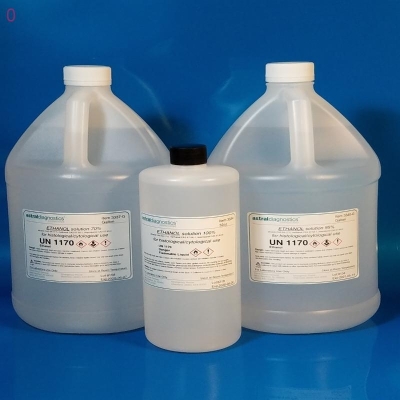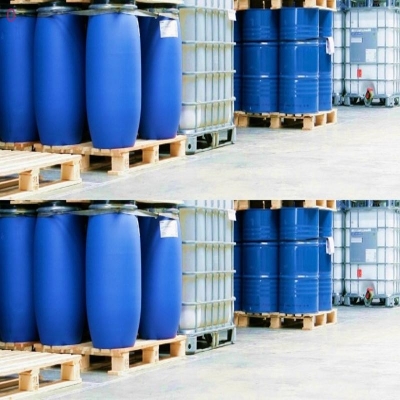-
Categories
-
Pharmaceutical Intermediates
-
Active Pharmaceutical Ingredients
-
Food Additives
- Industrial Coatings
- Agrochemicals
- Dyes and Pigments
- Surfactant
- Flavors and Fragrances
- Chemical Reagents
- Catalyst and Auxiliary
- Natural Products
- Inorganic Chemistry
-
Organic Chemistry
-
Biochemical Engineering
- Analytical Chemistry
- Cosmetic Ingredient
-
Pharmaceutical Intermediates
Promotion
ECHEMI Mall
Wholesale
Weekly Price
Exhibition
News
-
Trade Service
[ Focus on Chemical Machinery Equipment Network ] The world-renowned quality management expert Zhu Lan once said that if the 20th century is the century of productivity, then the 21st century is the century of quality
.
With the improvement of the economic level of modern society, the concept of quality and the awareness of quality gradually penetrate into the hearts of the people, coupled with the progress of modern science and technology and the development of industry, the industrial equipment used has become more and more sophisticated, and the inspection of equipment has also become Especially important
.
Chemical machinery and equipment network hotspots pay attention to chemical machinery and equipment.
With the improvement of the economic level of modern society, the concept of quality and the awareness of quality gradually penetrate into the hearts of the people, coupled with the progress of modern science and technology and the development of industry, the industrial equipment used has become more and more sophisticated, and the inspection of equipment has also become Especially important
.
Traditional detection methods require disassembling the parts of the equipment before testing.
With the emphasis on miniaturization in equipment production, disassembling equipment has become a problem, and non-destructive testing has developed under this background
.
With the emphasis on miniaturization in equipment production, disassembling equipment has become a problem, and non-destructive testing has developed under this background
.
Non-destructive testing technology (NDT) refers to the analysis of materials, parts, The method of inspection and testing of the equipment in response to changes in heat, sound, light, electricity, and magnetism
.
.
In 1978, China established the Non-destructive Testing Branch of the Chinese Mechanical Engineering Society, which is a national non-destructive testing academic organization
.
Non-destructive testing technology reflects a country's industrial development level to a certain extent, is an effective tool for industrial development, and its importance has been recognized
.
.
Non-destructive testing technology reflects a country's industrial development level to a certain extent, is an effective tool for industrial development, and its importance has been recognized
.
The current development of non-destructive testing technology has been relatively mature.
The main testing methods include ultrasonic testing technology (UT), radiographic testing technology (RT), penetrant testing technology (PT), and magnetic particle testing technology (MT).
Other testing methods are eddy Current Testing (ECT), an infrared thermal imaging (TIR) and the like
.
The main testing methods include ultrasonic testing technology (UT), radiographic testing technology (RT), penetrant testing technology (PT), and magnetic particle testing technology (MT).
Other testing methods are eddy Current Testing (ECT), an infrared thermal imaging (TIR) and the like
.
Ultrasonic Testing Technology (UT)
Ultrasonic Testing Technology (UT)Ultrasonic detection technology is a sound wave method, in simple terms, it uses ultrasonic energy to detect defects in materials or equipment
.
The general ultrasonic flaw detection system is composed of an ultrasonic flaw detector and a probe.
The couplant is used to polish the metal surface contacted by the probe to form a smooth and clean surface.
The ultrasonic wave is emitted into the metal to be tested, and then the echo reflected from the defect is received.
And analyze it
.
.
The general ultrasonic flaw detection system is composed of an ultrasonic flaw detector and a probe.
The couplant is used to polish the metal surface contacted by the probe to form a smooth and clean surface.
The ultrasonic wave is emitted into the metal to be tested, and then the echo reflected from the defect is received.
And analyze it
.
Ultrasonic testing technology is widely applicable to non-destructive testing of metals, non-metals and composite materials.
It can also detect internal defects of larger thickness equipment, but it is not suitable for testing equipment with complex or irregular shapes
.
It can also detect internal defects of larger thickness equipment, but it is not suitable for testing equipment with complex or irregular shapes
.
Radiographic Testing Technology (RT)
Radiographic Testing Technology (RT)Radiographic testing technology is a very widely used nondestructive testing method.
The commonly used types of radiation include X-ray and γ-ray.
They have extremely strong penetrating power and can penetrate materials that cannot be penetrated by the naked eye.
Film sensitivity
.
Then judge the defect by analyzing the information on the film
.
The commonly used types of radiation include X-ray and γ-ray.
They have extremely strong penetrating power and can penetrate materials that cannot be penetrated by the naked eye.
Film sensitivity
.
Then judge the defect by analyzing the information on the film
.
X-ray inspection technology has many advantages, such as high accuracy in positioning defects and intuitive recording of inspection results.
In terms of practical application, the technology is applicable to all materials, with very high universality, and the detected defect images are intuitive and easy Preservation, once launched, it is welcomed by all walks of life
.
In terms of practical application, the technology is applicable to all materials, with very high universality, and the detected defect images are intuitive and easy Preservation, once launched, it is welcomed by all walks of life
.
X-ray inspection technology is widely used.
In the industrial field, it can detect bubbles and cracks in castings and welds.
In the aerospace field, it can detect the quality of precision castings.
The common X-ray nondestructive inspection technology in life is X-ray inspection in hospitals.
.
In the industrial field, it can detect bubbles and cracks in castings and welds.
In the aerospace field, it can detect the quality of precision castings.
The common X-ray nondestructive inspection technology in life is X-ray inspection in hospitals.
.
Penetration Detection Technology (PT)
Penetration Detection Technology (PT) Penetration detection technology, also known as fluorescent penetration detection, is a liquid penetration detection.
It is divided into four steps: cleaning, penetrant coating, imaging observation (using ultraviolet light), and removal of surface developer.
It can be applied to metals and non-metals.
The detection of various materials such as magnetic and non-magnetic materials has the characteristics of high sensitivity, intuitive display and convenient operation, and can detect the morphology and distribution of material defects
.
But it can only detect the surface distribution of the defect, and cannot determine its actual depth and make a quantitative evaluation of the defect
.
It is divided into four steps: cleaning, penetrant coating, imaging observation (using ultraviolet light), and removal of surface developer.
It can be applied to metals and non-metals.
The detection of various materials such as magnetic and non-magnetic materials has the characteristics of high sensitivity, intuitive display and convenient operation, and can detect the morphology and distribution of material defects
.
But it can only detect the surface distribution of the defect, and cannot determine its actual depth and make a quantitative evaluation of the defect
.
Nowadays, penetration testing technology has become a testing method in the maintenance field.
It is an important technical method for grading the quality of engineering materials and parts, as well as an important means to improve production efficiency and improve processes
.
It is an important technical method for grading the quality of engineering materials and parts, as well as an important means to improve production efficiency and improve processes
.
Magnetic Particle Testing Technology (MT)
Magnetic Particle Testing Technology (MT) The basic principle of magnetic particle detection technology is to place magnetic materials such as iron, cobalt, and nickel in a strong magnetic field.
After they are magnetized, the magnetic particles will form visible magnetic marks due to the discontinuity on the surface and near the surface of the magnetic material.
It is mainly divided into five steps: pretreatment, magnetization, application of magnetic powder, inspection and post-processing
.
After they are magnetized, the magnetic particles will form visible magnetic marks due to the discontinuity on the surface and near the surface of the magnetic material.
It is mainly divided into five steps: pretreatment, magnetization, application of magnetic powder, inspection and post-processing
.
Magnetic particle inspection technology can only be used to detect defects on the surface and near-surface of magnetic materials.
It can detect discontinuities that they cannot be visually observed, and show the position, shape and size of the discontinuities
.
Its shortcomings are the high requirements on the surface smoothness of the tested material and the technical requirements of the testing personnel, the slow testing speed and the small range
.
It can detect discontinuities that they cannot be visually observed, and show the position, shape and size of the discontinuities
.
Its shortcomings are the high requirements on the surface smoothness of the tested material and the technical requirements of the testing personnel, the slow testing speed and the small range
.
Eddy Current Testing Technology (ECT)
Eddy Current Testing Technology (ECT) Speaking of eddy current testing technology, let us first understand what eddy current is
.
When the coil with alternating current is sheathed outside the tested metal plate, an alternating magnetic field will be generated near and inside the coil.
At this time, an alternating induced current in the shape of a vortex will be generated in the test piece, and we become an eddy current
.
.
When the coil with alternating current is sheathed outside the tested metal plate, an alternating magnetic field will be generated near and inside the coil.
At this time, an alternating induced current in the shape of a vortex will be generated in the test piece, and we become an eddy current
.
Eddy current testing technology is a technology that uses the principle of electromagnetic induction to measure the performance of various metal materials and a small amount of non-metals such as graphite and carbon fiber composite materials by detecting the eddy current changes in the test piece
.
During detection, the coil does not need to be in contact with the object to be tested, and can be used for notification detection.
Compared with other detection technologies, it is easier to achieve automation, but it is not suitable for detecting objects with complex shapes and most non-metallic materials
.
.
During detection, the coil does not need to be in contact with the object to be tested, and can be used for notification detection.
Compared with other detection technologies, it is easier to achieve automation, but it is not suitable for detecting objects with complex shapes and most non-metallic materials
.
With the development of computer technology, microelectronics, and various signal processing technologies, turbine detection technology is also constantly being developed and updated, and is used in various fields such as aviation and aerospace
.
.
Infrared Thermal Imaging Inspection Technology (TIR)
Infrared Thermal Imaging Inspection Technology (TIR) Infrared thermal imaging technology is an emerging detection technology that has gradually been widely used in recent years.
Like the aforementioned ECT, it is a non-contact detection technology and is currently widely used in aerospace, biomedical, mechanical and chemical industries
.
Like the aforementioned ECT, it is a non-contact detection technology and is currently widely used in aerospace, biomedical, mechanical and chemical industries
.
The process of transferring heat from the higher temperature part of the object to the lower temperature part, or from the higher temperature object to the lower temperature object is called heat conduction; research has shown that any object higher than absolute zero will not be transferred to the outside world.
Stop emitting electromagnetic waves, this is electromagnetic radiation
.
Infrared imaging detection technology based on the theory of heat conduction and electromagnetic radiation can analyze the internal energy flow of the object through the detection results of infrared imaging, and judge the defects of the object
.
Stop emitting electromagnetic waves, this is electromagnetic radiation
.
Infrared imaging detection technology based on the theory of heat conduction and electromagnetic radiation can analyze the internal energy flow of the object through the detection results of infrared imaging, and judge the defects of the object
.
The development of non-destructive testing technology today, with its solid theoretical foundation and skills, has become an important method of quality control and quality assurance in national economic production, and it plays a huge role in all walks of life
.
With the development of modern computer technology, digital processing technology, and real-time imaging technology, the application of non-destructive testing technology is becoming wider and wider.
In the future, non-destructive testing technology will continue to move towards digital, real-time, and large-scale trends
.
.
With the development of modern computer technology, digital processing technology, and real-time imaging technology, the application of non-destructive testing technology is becoming wider and wider.
In the future, non-destructive testing technology will continue to move towards digital, real-time, and large-scale trends
.
Original title: An overview of quality century non-destructive testing technology







